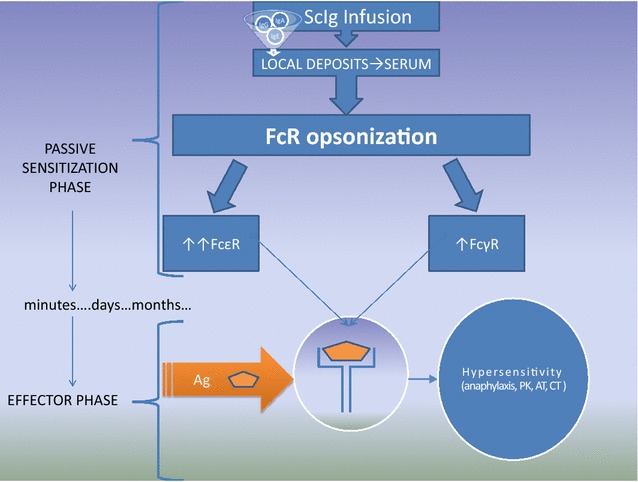Fig. 3.

Role of passive transfer of pathologic IgE and IgG in ongoing passive anaphylactic reaction during subcutaneous immunoglobulin therapy. ScIg contamination observed in the study by IgE, anti-blood group and rheumatoid factor (RF) are the source of passive hypersensitivity. In the sensitization phase the initial ScIg administration (containing IgG, IgM and IgE see Tables 2, 3) forms a local depot and local opsonization of immune cells (see Fig. 1) to form Prausnitz–Küstner (PK) (IgE and FcεR), Arthus-type reaction (AR) (IgG and RF) or positive Coombs tests (CT). After absorption and transport through the lymphatic system, free immunoglobulins from serum opsonise the blood and peripheral compartment cells thereby increasing FcR expression [23, 24], i.e. 32-fold elevation in FcεRI expression [25]. The cell surface immunoglobulins may be the source of positive skin tests and hypersensitivity reaction after antigen/allergen stimulation (a few days/months later see Fig. 2). Noteworthy basophils are players in the IgG- but not IgE-mediated systemic anaphylaxis [20]
